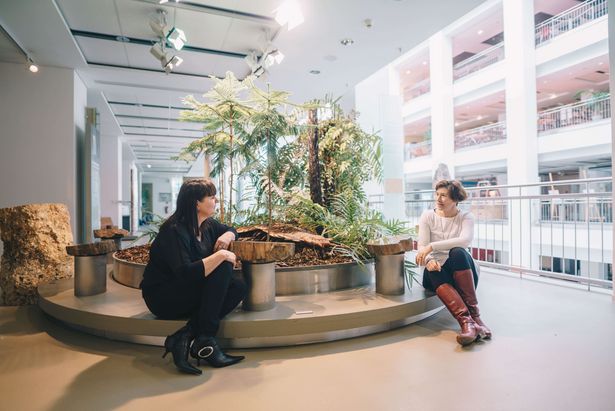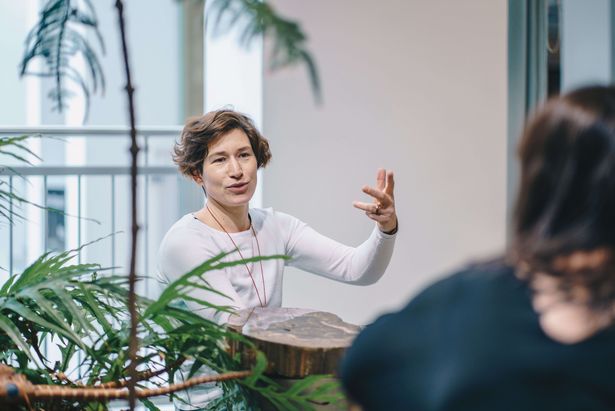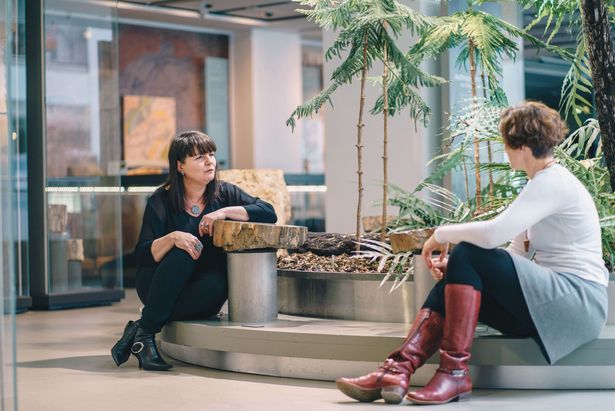First common ideas are spun and together we dare to look beyond the horizon: Chemnitz and the region - what connects in terms of nature?
Thorid: I think first of all of the waterways, the Mulde, the Würschnitz, the Zwönitz, the Kappelbach. But the historical trade routes also connect Chemnitz with the region. The salt route, for example, or the paths along which minerals found their way. Often these paths are now beautiful hiking trails - from Chemnitz to Olbernhau, for example, is very easy. The wealth of minerals can be traced particularly well in the direction of Marienberg and Wolkenstein. I'm sure the locals there can tell many stories about the prized amethyst.
Suzanne: I also think many people see Chemnitz as a grey industrial city - but you can always be in the countryside in five minutes. You can quickly get to the surrounding countryside or the Ore Mountains and do great tours there, too.
We are approaching the topic of the Capital of Culture: the application describes that one goal is not to divide people into target groups, but to unite them in their passions. How does it look so far - is this already lived practice?
Suzanne: I would confirm that especially with city walking: everyone who joins in the walk really wants to do it and that's nice. You get to know so much and see corners that you wouldn't have discovered otherwise. In Chemnitz, despite everything, you have short distances and no one imposes on you. But if you ask, someone always explains something. We were once walking in a garden area with a view of the motorway and suddenly we heard someone behind a hedge saying, "If the view is good, you can see the Fichtelberg here!" I find this curiosity and constant surprises in my own city very exciting.
Thorid: For us as a museum, this is a great idea and always an incentive in exhibitions. "Rock Fossil - Yes, it's Love" - a special exhibition about rocks named after rock stars, worked through the passion mentioned. With regard to the application as European Capital of Culture, the project "WE PARAPOM!" is particularly close to our hearts. The theme connects! As a museum, we invite people to think about what music sounds in the apple tree, for example? We can also imagine that the allotment gardeners, the twin cities or the previous capitals of culture send us their regional as well as old apple varieties. A gallery of apples can emerge from this. All this and much more is possible - I think it is fertilising in the truest sense of the word. It's about remembering existing values, finding new, creative solutions together and tackling things in an uncomplicated way.
We discuss a little further and arrive at the topic of health and nature.
Thorid: We need the sounds of nature to switch off and regenerate. Scientists are doing research on this to be able to shed light on the background and causes. Nature not only has an ideal value but also a value that can be measured in monetary terms!
Suzanne: It is not for nothing that there is the old saying: The best way to health is to go into the garden. It's simply pure relaxation - right in the middle of the city. Whether actively as a gardener or passively as a walker.


